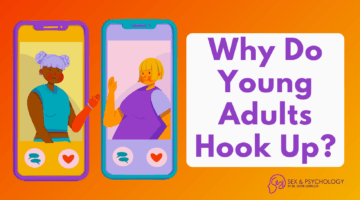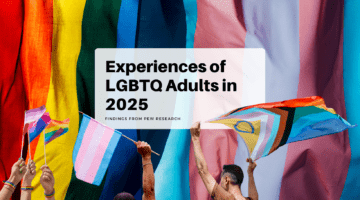LGBTQ Identification has Increased 41% Among US Teenagers
July 5, 2021 by Justin Lehmiller
The number of American adults identifying as LGBTQ+ is growing. As I reported earlier this year, LGBTQ+ identification in national polls has increased by about 60% from 2012 to 2020, going from 3.5% to 5.6%. However, this increase has been heavily concentrated among the youngest adults (Generation Z), among whom nearly 16% now identify as LGBTQ+.
So what’s happening with adolescents and teenagers? Are we seeing a comparable rise in LGBTQ+ identification in youth populations as well?
A recent report points to a substantial rise in identification among high school students. The data, published in the journal JAMA Pediatrics, come from a survey conducted by the CDC of 41,884 students aged 15-17. Data were collected in 2015, 2017, and 2019.
Participants were asked about both their sexual identity as well as whether they have ever had a same-sex experience.
Between the years 2015-2019, identification as gay, lesbian, or bisexual increased by 41.4% overall, going from 8.3% to 11.7%.
The increase was greater among girls than it was among boys, however. Specifically, LGB identification increased by 46% among high school girls compared to 28% among high school boys.
Girls are also more likely to identify as LGB overall: in the 2019 data (the most recent year available), 17.8% of girls identified as LGB, compared to 5.7% of boys.
Interestingly, despite the change in identification, there were no statistically significant changes overall in terms of whether people had a same-sex experience. In other words, identification changed, but behavior did not.
That said, it’s worth noting that the number of people who reported a same-sex experience was greater than the number who identified as LGB during all waves of data collection—and this was true for both boys and girls.
So, for example, while 11.7% of the overall sample identified as LGB in 2019, 13.3% reported having had a same-sex experience.
In my observation of the data, it appears that the gap between identity and behavior got smaller over time. When you couple this with the fact that behavior did not change, this suggests that the trends we’re seeing may reflect people adopting identities that are more reflective of their attractions and behaviors—perhaps because we live in a time when LGBTQ+ identities are more accepted, which is increasing comfort with coming out.
There are some limitations of this study, including the fact that the only LGBTQ+ identities people could report were gay, lesbian, and bisexual. Thus, the true number who identify as LGBTQ+ is probably higher. Also, “sexual contact” was not defined for participants, so it is unclear which specific behaviors people were referencing when they reported a same-sex experience. Thus, some might be talking about kissing or touching only, whereas other may be talking about oral sex or intercourse, and yet others may be talking about mutual masturbation.
That said, these findings tell us that LGBTQ+ identification is on the rise among US teens, just as it is among US adults—and the numbers may continue to rise as LGBTQ+ acceptance further increases. Of course, we also know that sexuality can be fluid to some extent and that identities, attractions, and behaviors change over time for some people. Thus, it’s also possible that not everyone who identifies as LGBTQ+ now will do so for their entire lives, so we may see some ebbs and flows in the numbers over time.
Want to learn more about Sex and Psychology? Click here for more from the blog or here to listen to the podcast. Follow Sex and Psychology on Facebook, Twitter (@JustinLehmiller), or Reddit to receive updates. You can also follow Dr. Lehmiller on YouTube and Instagram.
To learn more about this research, see: Rapoport, E., Athanasian, C. E., & Adesman, A. (2021). Prevalence of Nonheterosexual Identity and Same-Sex Sexual Contact Among High School Students in the US From 2015 to 2019. JAMA Pediatrics.
Image Credit: Photo by Sharon McCutcheon on Unsplash

Dr. Justin Lehmiller
Founder & Owner of Sex and PsychologyDr. Justin Lehmiller is a social psychologist and Research Fellow at The Kinsey Institute. He runs the Sex and Psychology blog and podcast and is author of the popular book Tell Me What You Want. Dr. Lehmiller is an award-winning educator, and a prolific researcher who has published more than 50 academic works.
Read full bio >


